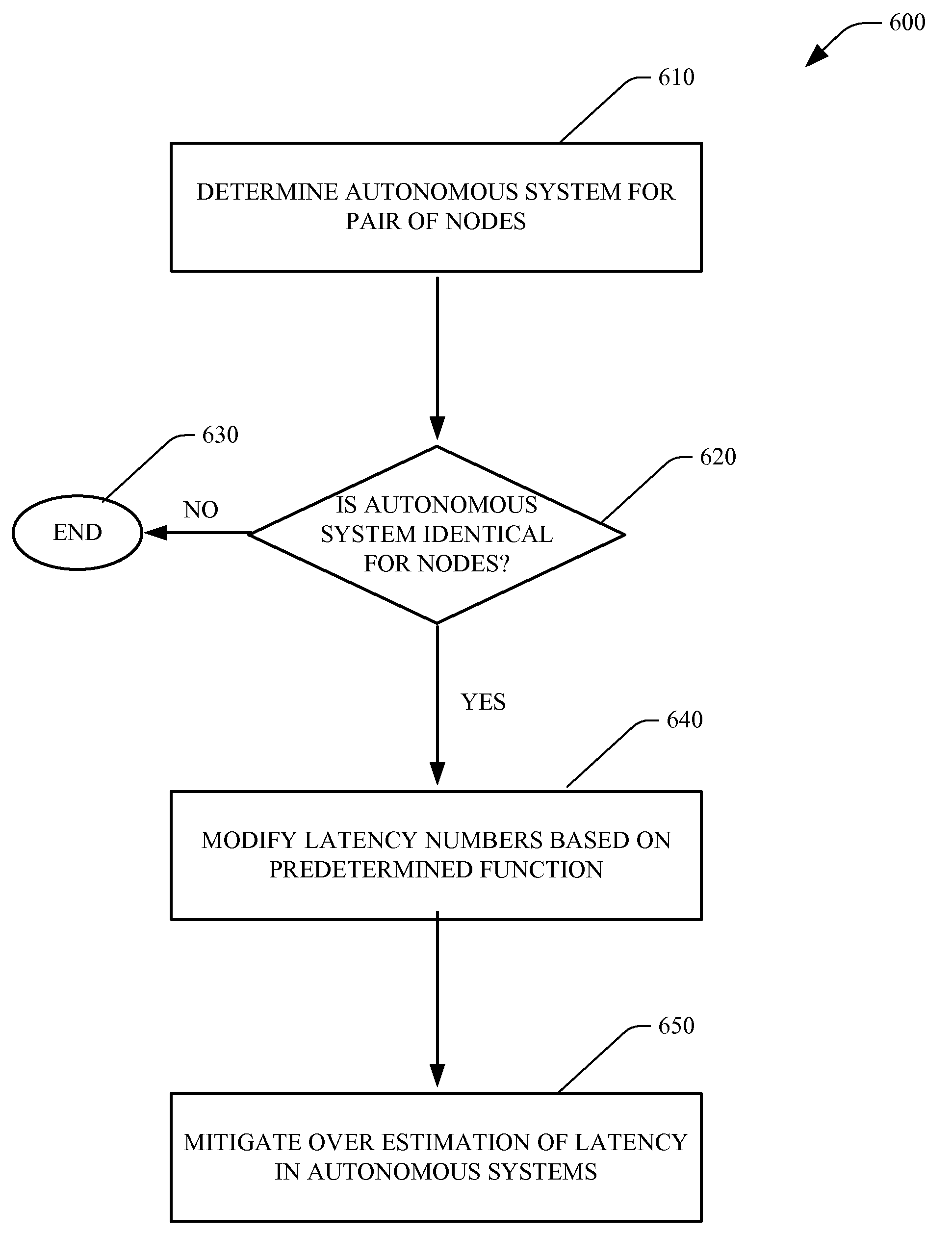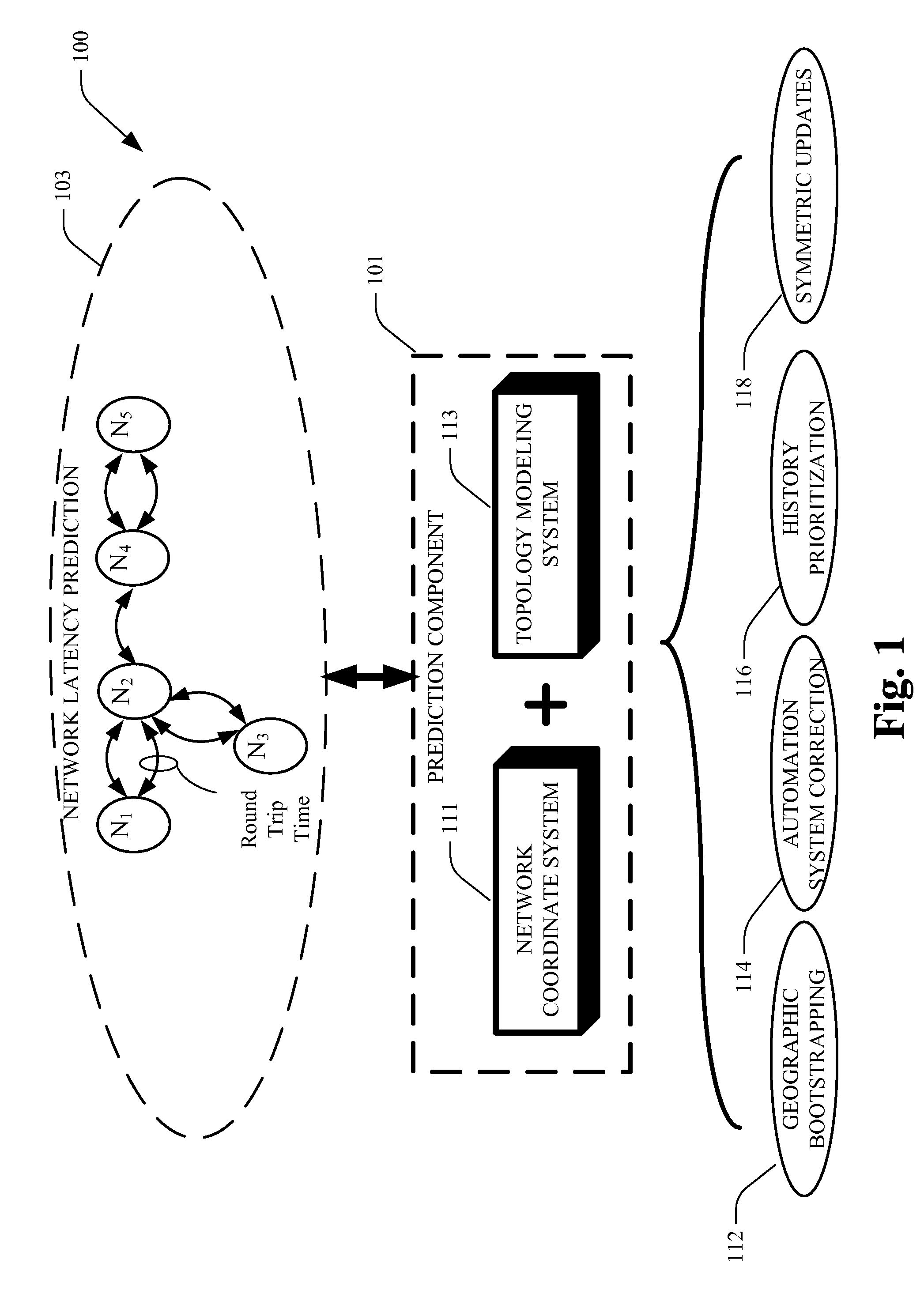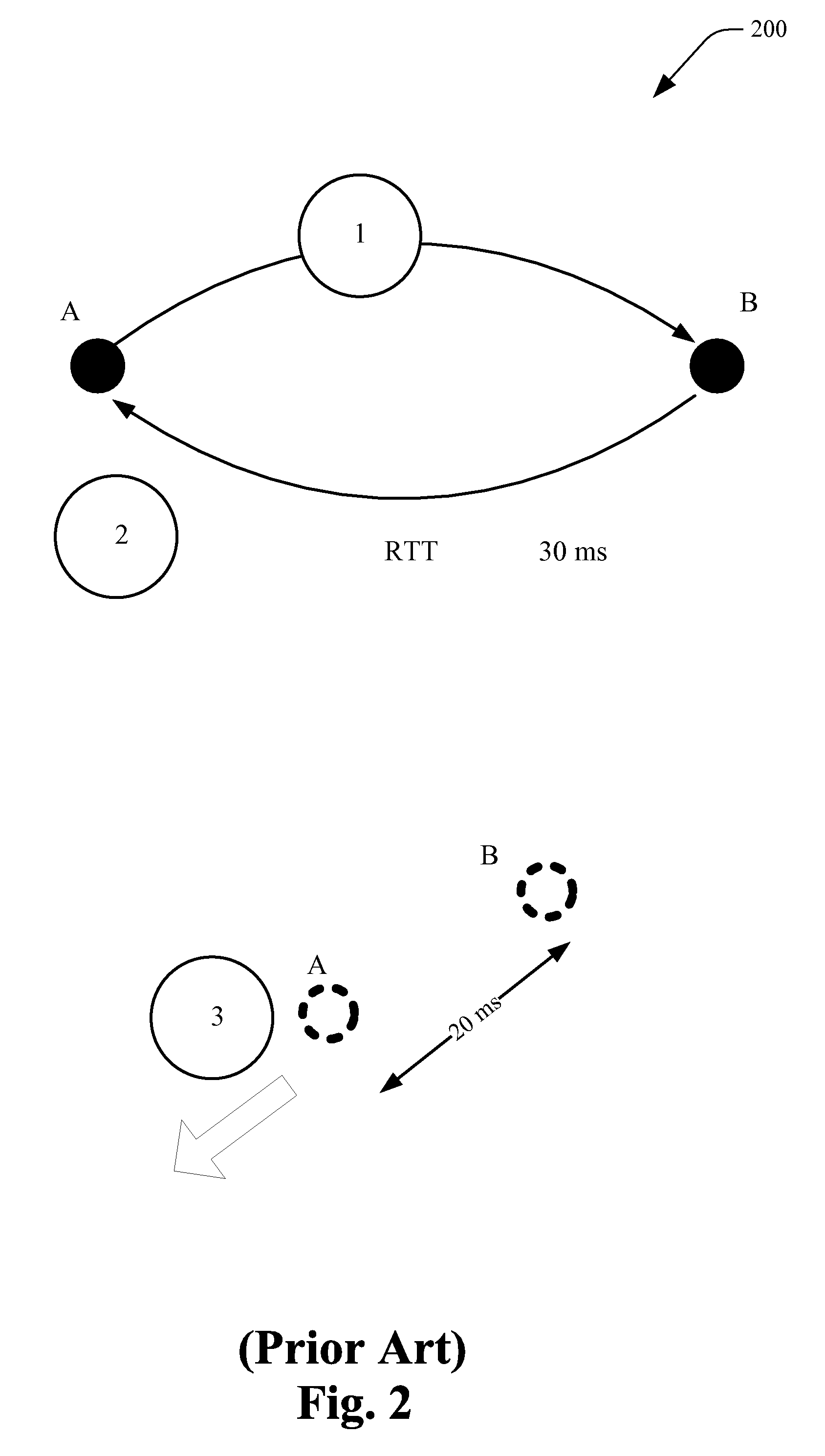Network coordinate systems using IP information
a network coordinate system and coordinate system technology, applied in the field of network coordinate systems using ip information, can solve the problems of affecting the prediction of network latency, unable to meet the reality of the internet, and each of these approaches has limitations, so as to achieve the effect of enhancing an ncs, facilitating decentralized implementation systems, and improving network latency prediction
- Summary
- Abstract
- Description
- Claims
- Application Information
AI Technical Summary
Benefits of technology
Problems solved by technology
Method used
Image
Examples
Embodiment Construction
[0027]The various aspects of the subject innovation are now described with reference to the annexed drawings, wherein like numerals refer to like or corresponding elements throughout. It should be understood, however, that the drawings and detailed description relating thereto are not intended to limit the claimed subject matter to the particular form disclosed. Rather, the intention is to cover all modifications, equivalents and alternatives falling within the spirit and scope of the claimed subject matter.
[0028]FIG. 1 illustrates a block diagram 100 for a prediction component 101 that predicts network latency according to an aspect of the subject innovation. Such prediction component 101 improves prediction in network latency of network coordinate system (NCS) 103 based on combining features of network topology 105 with the NCS 103. In particular, the prediction component 101 can employ one or more features / methodologies of: geographic bootstrapping 112; autonomous system correcti...
PUM
 Login to View More
Login to View More Abstract
Description
Claims
Application Information
 Login to View More
Login to View More - R&D
- Intellectual Property
- Life Sciences
- Materials
- Tech Scout
- Unparalleled Data Quality
- Higher Quality Content
- 60% Fewer Hallucinations
Browse by: Latest US Patents, China's latest patents, Technical Efficacy Thesaurus, Application Domain, Technology Topic, Popular Technical Reports.
© 2025 PatSnap. All rights reserved.Legal|Privacy policy|Modern Slavery Act Transparency Statement|Sitemap|About US| Contact US: help@patsnap.com



